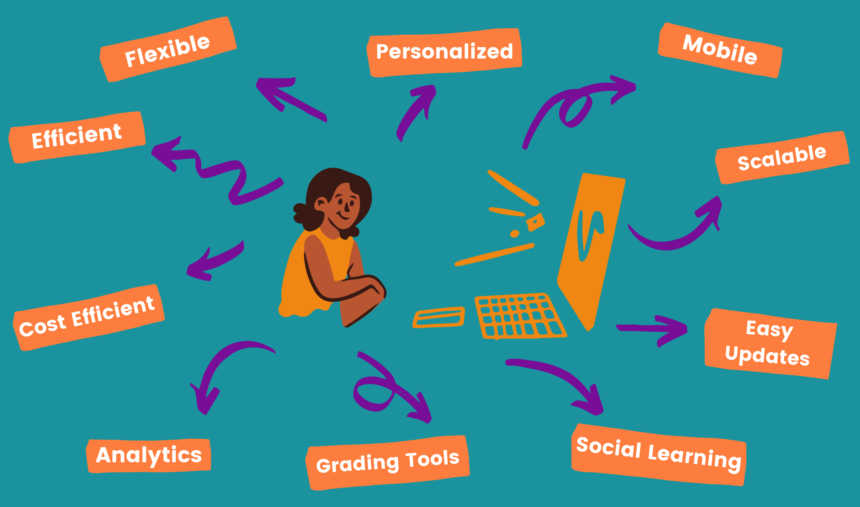In today’s changing world of education, teachers are always looking for ways to improve how students learn. One tool that has become popular in years is the Learning Management System (LMS). An LMS is a platform that helps organize content and keep track of student progress. In this article, we will explore the advantages of using an LMS and share some strategies for making the most of it in education.
Advantages of Using an LMS
1. Easy Access to Learning Materials
One benefit of an LMS is that it provides a location for all learning materials. With an LMS such as Uptick, teachers and students can access course materials, notes, extra resources, and presentations from anywhere at any time. This accessibility allows for learning that accommodates learning preferences.
2. Streamlined Course Management
Managing courses can be tough for teachers with classes. Fortunately, an LMS makes course management much simpler and more organized. It enables teachers to create schedules, assign tasks or homework, conduct assessments, and facilitate discussions effortlessly. By reducing paperwork and offering an environment, both teachers and students benefit from using an LMS.
3. Personalized Learning Paths
Every student has their abilities and ways of learning. A learning management system (LMS) equips teachers with tools to create learning paths tailored to each student’s requirements. By using assessments and automated grading systems integrated into the LMS, educators can pinpoint knowledge gaps or areas where individual students might need assistance.
4. Improving Communication Between Teachers & Students
Communication plays a role in any educational environment, but maintaining constant contact with every student can be demanding for teachers. By incorporating discussion boards or chat features within an LMS platform, educators can cultivate conversations with students beyond class hours.
5. Monitoring Progress & Analyzing Data
Traditionally, collecting and analyzing student data can be a time-consuming process, especially with teaching methods. In contrast, an LMS streamlines this process by consolidating student performance data, such as grades and completion rates, in one place. This data can then be evaluated to gauge learning outcomes, pinpoint areas for enhancement, and make decisions based on strategies.
Strategies for Optimizing the Utilization of an LMS in Education
1. Training for Everyone Involved
To ensure the rollout and effective use of an LMS, it’s essential to provide training for all parties involved—including teachers, students, and administrators. This training should cover how to navigate the LMS platform, create engaging content, conduct assessments digitally, manage discussions or chats efficiently, and utilize the system’s analytics tools for tracking progress.
2. Integrating with Current Teaching Methods
Implementing an LMS in a setting may require a shift in teaching approaches for both educators and learners. It’s crucial to highlight how the system can enhance teaching methods rather than completely replace them. Encourage educators to incorporate the advantages of an LMS into their existing curriculum and teaching styles.
3. Engaging Students through Interactive Elements
One of the benefits of using an LMS is its ability to engage students with features. Utilize multimedia elements, like videos or quizzes, that promote student participation. Adding gamification aspects can also make learning enjoyable and motivating.
4. Regular Monitoring and Feedback Processes
Effectively utilizing an LMS involves monitoring student progress using the systems analytics tools. Support teachers by helping them understand data and assist in making informed decisions. Moreover, it creates avenues for students to share feedback on their usage of the LMS, ensuring enhancements.
To Conclude
In conclusion, integrating technology into education has significantly reshaped teaching approaches. Transformed the learning process for students. Utilizing an LMS equips educators with a resource that enhances access to learning materials, streamlines course management, tailors instruction to needs, improves communication channels, and facilitates data-informed decision-making. By implementing strategies for utilizing an LMS to its potential educational institutions can unlock new opportunities to improve student outcomes and revolutionize teaching methods. Embracing an LMS in education transcends advancement; it represents a transformative shift, in the learning journey.






